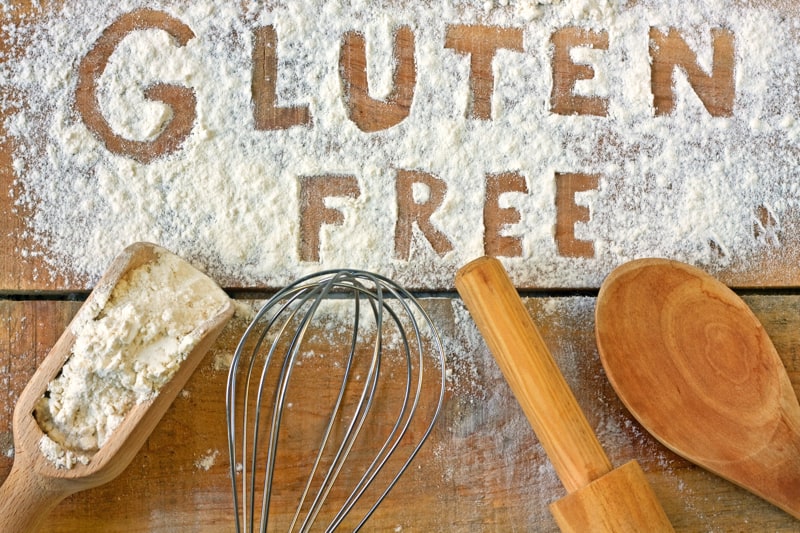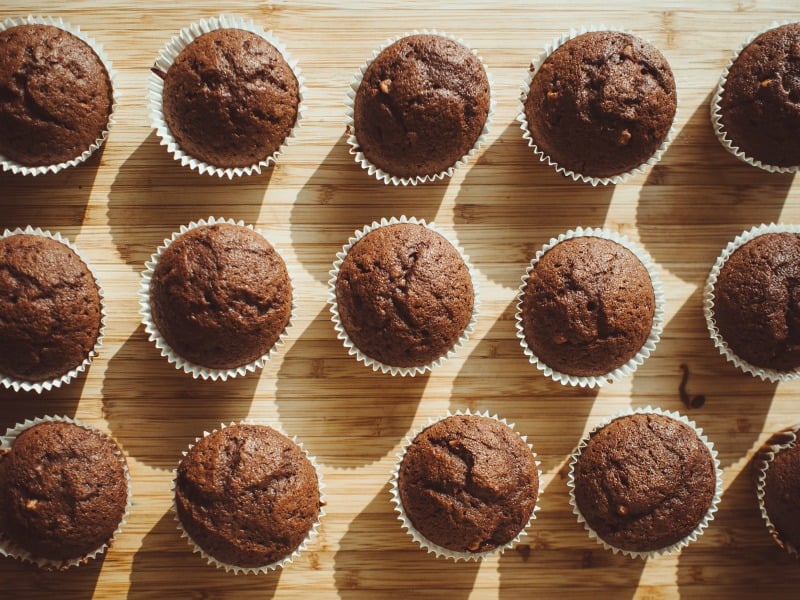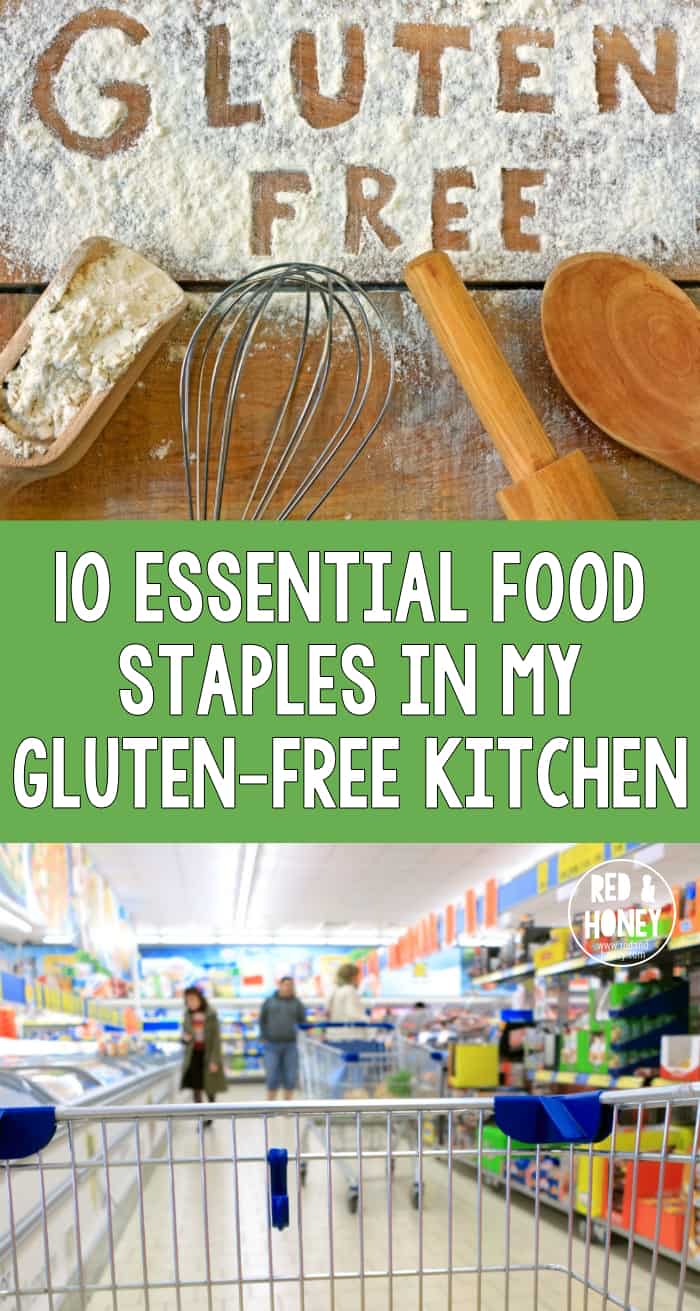
Every time I hear someone minimizing the gluten-free movement as some kind of fad bandwagon with no possible merit whatsoever, I die a little on the inside.
Especially when the arguments are as sophisticated as yelling, “It’s a fad! Everyone who is gluten-free eats only processed GF crap and that’s bad! It’s lacking the fortified vitamins that we add to our almighty Wonderbread!”
(If I rolled my eyes any harder they’d roll right outta my head.)
I wonder if they would agree, if pressed on the issue, that if millions of people are experiencing the benefits first-hand of removing gluten from their diets – then that counts for something, too.
Personally, I value my own personal experience and results over and above whatever the processed food companies, scientists, and media are tittering about lately. They all change their minds on these things every five minutes, anyway. (Not the mention the plain old common sense that duh, of course a gluten-free, highly processed diet is unhealthy. So is a gluten-filled, highly processed diet.)
If you feel vibrant, energetic, and super healthy – and you eat wheat – awesome. If you don’t, one of the first things I might suggest is to try out a strict gluten-free diet for a month. It’s as simple as that.
(Note: If your symptoms are significant, though, be sure to ask your doctor about Celiac Disease. The test needs to be done while you’re still consuming wheat.)
If cutting out gluten removes my severe brain fog, my significant joint pain, and allows my moods to stabilize, well, then I’m going to cut out gluten regardless of whatever inflammatory, poorly argued, and unintelligent article is going around lately.
And as a matter of fact – that’s exactly what I’ve experienced, and that’s exactly why I’ve left gluten behind me once and for all.
So now that I’ve got that off my chest, let’s get down to business!
Our family’s history with gluten
I’ve been learning about the gluten-free lifestyle for over five years now – ever since we removed gluten from our son’s diet when he was two.
We had a period of about a year when we started consuming gluten again, thinking that he had been experiencing simply a sensitivity that he had then healed or grown out of. Unfortunately, about eight months into eating gluten again, he developed significant motor tics that were occurring sometimes as frequently as every few seconds, at their worst. They were very obvious to everyone – our family, his teacher, our doctor.
After consulting with a doctor and a naturopath, we removed gluten from his diet last fall, and the tics (after having been with him for about 6 months) disappeared 98% within about three days. He’s now gluten-free for the permanent, foreseeable future.
This past winter, in an effort to take my adrenal fatigue healing efforts to the next level, I decided to give up gluten and dairy permanently. Removing both of those gave me significant results, as mentioned above. (I’ll write a separate post about my experience with dairy.)
For varying additional health concerns, as well as for family solidarity, we’ve decided that our entire family is going to be gluten and dairy-free from now on.
We’re still finding our stride with being dairy-free (it’s SUPER tough to do when out of the house), but I think we’ve got a pretty good rhythm for being GF.
With that being said, I wanted to share my top ten staples that I like to keep on hand, relating to our gluten-free lifestyle.

Top 10 staples to keep on hand for a GF kitchen
1. Rice flour
This is probably the most commonly used flour in gluten-free baking and cooking. It’s important to note, though, that GF baking yields the best results when a variety of flours and starches are used. Simply swapping rice flour for the wheat flour in a recipe won’t work, and won’t taste good. (Store-bought GF all-purpose flour is always a blend of three or more flours and starches for this reason.)
Rice flour is also my go-to for a thickening agent when making gravies or sauces. I find it gives the best “normal” result, as opposed to using something like tapioca starch, which can give a more gelatinous result. Goopy gravy ain’t my thang.
2. Coconut flour
I adore coconut flour because it’s higher in protein, and lower in carbs. It takes a very small amount in a recipe, and needs a lot of binding, which is typically eggs. I’ve made lots of muffin recipes that call for something like 1/2 cup of coconut flour, and 6 eggs.
(Unfortunately, my youngest seems to be intolerant to eggs based on the elimination diet we did to deal with his eczema, so I’ll be doing a lot of experimenting with coconut flour and egg substitutes like flax and chia.)
My ultimate favourite combo for gluten-free baked goods (for taste and nutrition) is coconut flour and almond flour – the texture and flavour is most reminiscent of a typical baked good, and it’s not mostly empty carbs, which I love.
A note of caution: you can’t sub in coconut flour to your fave recipe. It behaves very differently from wheat flour, or even rice flour, and subbing it will likely lead to a baking fail. Search for recipes that are specifically written to use coconut flour.

3. GF oats
Depending on your level of sensitivity, you may require your oats to be certified gluten-free. Oats themselves don’t contain gluten, but they are typically cross-contaminated in their processing. We found that Isaac definitely needed the GF variety, as he was reacting to the regular ones.
Oh! And with these, you can make my Triple Threat Cookies. Oatmeal, peanut butter, and chocolate chips, with no refined sugars. You honestly can’t tell that they’re gluten-free or refined-sugar free. These babies are crowd-pleasers no matter what. Not that I’d know from experience, since they tend to disappear within 24 hours max around here, with me hoarding as many as possible for myself…
4. Quinoa pasta
I stumbled on this brand at my local Costco a few months back, and it has been a total game-changer! Because quinoa is nice and high in protein (for a pseudo-grain), it has become my most valuable “oops I didn’t plan dinner” fallback. We like it plain, drizzled with avocado oil and sprinkled with some salt and pepper. Preferably Redmond’s organic seasoning salt – that stuff really floats our boats. I throw some steamed veggies or carrot sticks on the side, and call it a day.
If you can’t find the quinoa pasta, then here’s the best rice pasta I’ve ever tasted.
5. Chia seeds
These little wonders are often included in gluten-free baking recipes because they’re a great binder, which is part of gluten’s job in regular baked goods. Chia seeds are pretty amazing and have tons of uses.
Check out this article I wrote on the Health Benefits of Chia Seeds, with 25 Ways to Use Them.
6. Tamari and GF Worcestershire sauce
Many family favourite recipes that I ate growing up relied on either soy sauce or worcestershire sauce (like my Aunt Beulah’s Saucy Chicken), so I keep some tamari (GF, fermented soy sauce – this brand) and some GF worcestershire sauce (I bought whatever my local health food store had on the shelf) on hand at all times.

7. Rice cakes or crackers
They are processed, yes, but minimally so. For quick, convenience snacks that are gluten-free, these are my go-to’s. The only ingredient in plain rice cakes is rice, and I buy rice crackers with as few ingredients as possible.
We put almond butter on them, dip them in hummus, or eat them plain.
8. Tapioca and potato starch
Like I mentioned above in #1, a good gluten-free all purpose baking flour is typically composed of several different flours and starches. I keep tapioca and potato starch on hand at all times, as I find myself using them most commonly. I tend to use recipes that call for the flours individually (as opposed to “3/4 cup all-purpose GF flour”, for example).
They’re also great for thickening things that are meant to be gelatinous or thick, like pudding. (Throwback to #5: you could use chia seeds to make pudding, too!)
9. Organic corn chips
These get filed under the “acceptable compromise” category in our house. They’re not perfect since they’re made with seed oils (not my ideal) and might have a preservative in them as well. But they’re non-GMO, organic, and my kids love them with hummus. It’s a much better quick snack than 99% of the processed junk out there, and it’s working for us right now.
10. Nuts
We find that with the absence of the usual processed junk-food snacks in the house, we need to be vigilant about keeping quick snacks on hand. Most conventional snack foods are wheat-based – granola bars, crackers, bread, baked goods, etc. When you cut out wheat, and you don’t want to just replace it with processed gluten-free junk, you’re left with gaping holes in your cupboard. Nuts are a perfect quick snack.
Bonus: they help curb sugar cravings with their fat and protein content, and if they’re salted, they really satisfy a salty craving!
We also keep almond flour on hand to bake with, and love the texture of the baked goods!
What else is good to keep on hand in a gluten-free kitchen?
Thanks to Plan to Eat for sponsoring this post! Menu planning is super easy with PTE, and it’s the key to success on a restricted diet. I’ve recently been using a new strategy in my menu planning (using PTE as the planning tool) that I’m really loving, and I’ll share it on the blog soon, so stay tuned.

Disclaimer: I’m not a doctor and this post should not be used as medical advice. This post is not intended as a substitute for seeing your own health professional.
Original article and pictures take redandhoney.com site
Комментариев нет:
Отправить комментарий